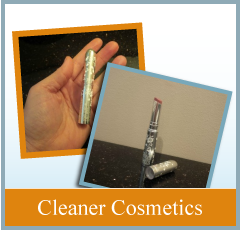October is Breast Cancer Awareness Month. This is not something that I have to remember — the pink products everywhere tell me that it is. Cancer is a terrible disease, and I’ve always thought pink was a terrible colour, so I guess the two things go together.
Like most women my age, I have friends, family, colleagues, and acquaintances who’ve had to face this diagnosis and live through it the best way they can. Some have been more fortunate than others. And I am so grateful for those who still stand beside me and have been able to resume a life a of mothering, and working, and living all that regular life entails when you are not sick.
I also know it’s Breast Cancer Awareness Month because my email box tied to this blog is filling up with “pitches” for me to help raise awareness. But it’s not a request to create awareness around how to do a self breast-exam, or how research dollars are making a difference, or even how fundraising dollars are helping women of low-income families to receive treatments in countries that don’t have socialized health care. These pitches are to raise awareness about the company’s particular cause marketing campaign related to Breast Cancer Awareness Month — i.e. we have a pink-coloured product, that when purchased will result in a donation of $X to X charity.
When I receive charitable requests, I always consider them. They certainly pull my strings more than any other kind of request. But in reading a few of these, I didn’t quite feel “right.”
What’s wrong with pink marketing?
In theory, if I needed to buy a particular product and it also happened to result in a donation if I buy the product, it’s a win-win, right? But the more products that are turning pink, the more I start to think that this must be a profitable endeavour. Just like selling a “green-ified” product is au courant, so it seems is the “pink-ified” product.
Yet, we all know that not all “green” products are actually doing much for the environment. Rather the term “green” is simply a way to help sell more product. Thus the term “green-washing.” And, in turn, a new term “pink-washing” is being used by a number of organizations.
Breast Cancer Action, in particular, is a strong voice on this issue of “pink-washing.” This organization has produced a list of critical questions to ask yourself before buying pink. These five questions are:
- 1. How much money from your purchase actually goes towards breast cancer?
- 2. What is the maximum amount that will be donated?
- 3. How are the funds being raised?
- 4. To what breast cancer organization does the money go, and what types of programs does it support?
- 5. What is the company doing to assure that its products are not actually contributing to the breast cancer epidemic?
To learn more about the rationale and concerns that lay behind these questions, click over to the Think Before You Pink site. While I cannot refute the fact that pink marketing has raises millions of dollars over the years, I still think these questions are important to ask before pulling out your wallet.
- In “Welcome to Cancerland,” Barbara Ehrenreich resents the infantilizing of cancer with pink teddybears
- In “Breast Cancer Awareness Month: Now a Word about the Sponsors,” Barbara A. Brenner is appalled that Breast Cancer Awareness Month’s focus is so narrow — on early detection through mammograms — rather than on the larger issues of why breast cancer rates are rising and what new treatment options can be developed.
- And here is a recent national newspaper article featuring two local (Ottawa) women who are fighting the use of pink for profit.
- lump or swelling in the armpit
- changes in breast size or shape
- dimpling or puckering of the skin – thickening and dimpling skin is sometimes called orange peel
- redness, swelling and increased warmth in the affected breast
- inverted nipple – nipple turns inwards
- crusting or scaling on the nipple
















Speak Your Mind